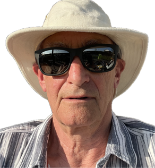-
Posts
9,499 -
Joined
-
Last visited
-
Days Won
80
Content Type
Profiles
Forums
Blogs
Gallery
Calendar
Downloads
Everything posted by Ron Gray
-
Interesting Steve, did you fly it without the cowl at all?
-
Yes, something like that D.D. but a couple of inlets set further back in the fuse to allow for the tube to rear facing carbs to go straight back then curve out. The one for the rear carb will have to go through the firewall and I need to make sure that both tubes are the same length. Goodness knows if it will work, I can’t really try it before cutting as the inlet to the rear carb is too close to the firewall to allow the tube to curve, so an evening of humming and haaing!
-
I got a flat battery on my Just Engines 24v starter yesterday. Never happened before, maybe it was something to do with flying buddy reversing over it when he left the field?
-

Laminating film - buying it and using it.
Ron Gray replied to Ron Gray's topic in Modelling Money Savers...
@colin wray 2- please let me know if you still want the laminating film as I have others who want it if you don't. To be fair I'll leave it until midnight tonight then, if I still haven't got your details / payment then I will sell it on.- 238 replies
-
- laminating film
- encapsulating film
- (and 2 more)
-
It was D.D. until I put the cowl back on then it was running slightly too rich. I'm going to play around with air intakes to see if I can feed the carbs directly from outside air.
-
Back up to the field today as the sun was shining and the wind had dropped from yesterday - maiden flight (uncut). I will be checking the telemetry to see if i had low signals when I got the low telemetry warnings.
-
Part 2 of the vid
-
First part of tuning flight vid - apologies for the sound of ethnic wind, it was a bit strong again today!
-

Bowman Spatman
Ron Gray replied to Former Member's topic in Building from Traditional Kits and Plans
It seems to be even quicker now that the needle has been sorted! -

Laminating film - buying it and using it.
Ron Gray replied to Ron Gray's topic in Modelling Money Savers...
If you look at your messages Colin, you will see messages from me, just reply to them!- 238 replies
-
- laminating film
- encapsulating film
- (and 2 more)
-

Bowman Spatman
Ron Gray replied to Former Member's topic in Building from Traditional Kits and Plans
Thanks Piers, I know I keep saying it but it’s such a hoot to fly, especially now that it can go 10 minutes. The other thing that has surprised everyone is how well it flies in windy conditions. I also discovered a new trick, one wheel touch and goes, brilliant! Anyway, I’m using a SLEC Maxi tank, 4oz size (blue). -
Flew the Sportster today (more very windy conditions) and re-tuned as it was a little too rich with the filters in place (as expected). Flew it without the cowl on to allow me easing adjusting - vid to follow.
-

Bowman Spatman
Ron Gray replied to Former Member's topic in Building from Traditional Kits and Plans
Well I took 'Spatty' out again today and got flights of up to 10 minutes! There problem was to do with the needle assembly so to avoid messing around I replaced the complete rear cover plate and needle (thanks to Just Engines) - sorted! Trouble is I just 'won' an eBay auction for another, this time brand new, OS 15 LA! -

Laminating film - buying it and using it.
Ron Gray replied to Ron Gray's topic in Modelling Money Savers...
Will do Bob.- 238 replies
-
- laminating film
- encapsulating film
- (and 2 more)
-

Laminating film - buying it and using it.
Ron Gray replied to Ron Gray's topic in Modelling Money Savers...
Hi Bob, well I’ve still not heard from @colin wray 2so I’ll give him until Friday and if I still haven’t from him then it’s yours Bob.- 238 replies
-
- laminating film
- encapsulating film
- (and 2 more)
-

Laminating film - buying it and using it.
Ron Gray replied to Ron Gray's topic in Modelling Money Savers...
I can confirm that it doesn’t shrink as much as the HK transparent film which, if applied with too much heat, can easily crush structures! Apply lam film with circa 120 degrees to stick it then shrink at circa 150 degrees, should be fine.- 238 replies
-
- laminating film
- encapsulating film
- (and 2 more)
-
Peter Miller’s Peggy Sue 2, spot on for the B plus a real all weather, ‘go to’, ‘plane. An easy build and rugged as old boots!
-
Speed-Flea
-
i'll let you know hone I've run it later on this week! But I don't think they will effect the tuning that much, a tad richer possibly.
-
I'm sure you will find it helpful, it really is a good book for all types of flying ability not just for those who want to do F3A.
-
Peter is based in Suffolk, flies from my site in South Norfolk - great guy!
-
I've got one of the Speedfleas, they are excellent!



